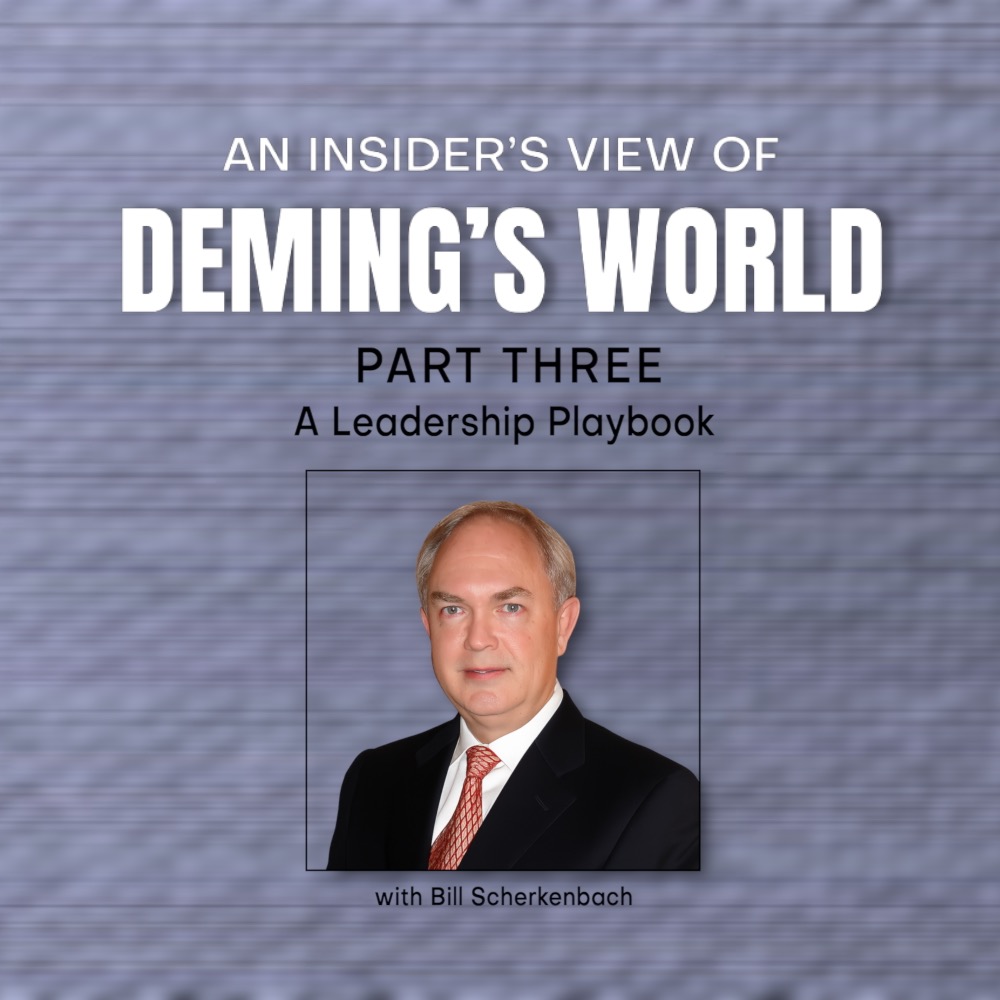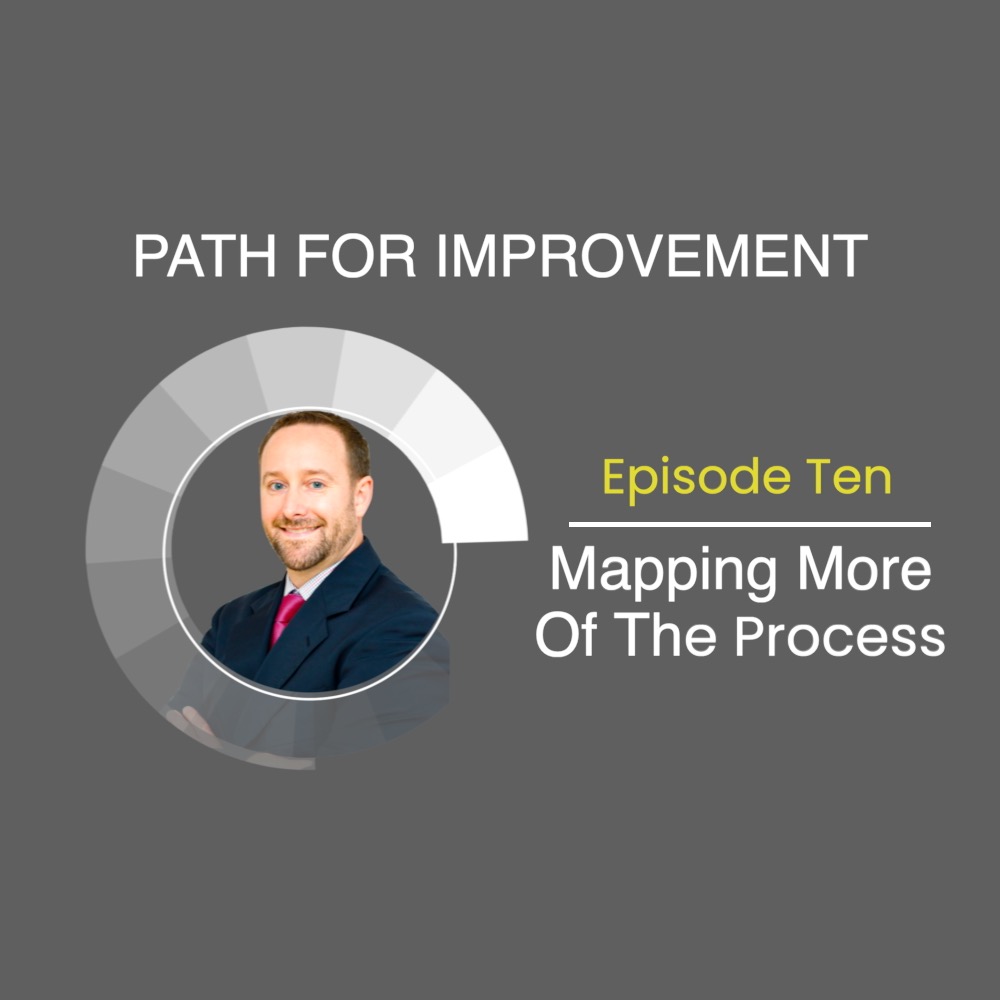Moving Productivity Forward: Boosting Lean with Deming (Part 7)
Description
In the final episode of the series, Jacob Stoller and Andrew Stotz discuss the difference between typical companies using traditional management and more successful Deming-style companies. If productivity and performance are so much better, why do companies stick with traditional management?
TRANSCRIPT
0:00:02 .3 Andrew Stotz: My name is Andrew Stotz, and I'll be your host as we dive deeper into the teachings of Dr. W. Edwards Deming. Today, I continue my discussion and conversation with Jacob Stoller, Shingo Prize winning author of The Lean CEO. And ladies and gentlemen, I just received my copy finally. Productivity Reimagined, it just arrived from Amazon. You can get it there. And that's the latest book that he's come out with. And this is exploring applying Lean and Deming Management Principles at the enterprise level. The topic for today is moving forward with productivity. Jacob, take it away.
0:00:41 .7 Jacob Stoller: Oh, thank you, Andrew. Great to be here once again. Yeah. Moving forward. That's really Chapter 13. Whether you consider that, hopefully you consider 13 lucky as I think they do in Italy.
0:00:57 .4 AS: We do in Thailand.
0:01:00 .4 JS: Oh, really? Wonderful. Okay. Perfect. Anyway, so I wrote in the book, I sort of defined where we're trying to go by describing two companies; a typical company, and then the company that we would aspire to for maximum productivity. So I'm gonna read those, just to illustrate. "Company A follows traditional top-down management practices. Leaders determine how the work is to be done, and give orders to their staff accordingly. Individuals, functional groups and departments are treated as independent entities under centralized control. Pay and promotion are determined by individual performance according to a set of predetermined criteria. Employees are ranked and encouraged to compete with each other." So that's company A, your typical company, which probably comprises what percentage would you say? 90%? 95%?
0:02:03 .8 AS: 97.9%
0:02:04 .4 JS: Okay. Okay. Let's look at where we'd like to go from there. "Company B is managed as an interactive system where people and functional teams depend on each other. Supervisors aren't expected to have all the answers, and they rely on frontline workers to share their workplace knowledge and take an active role in improving their work processes. All employees know they are part of a team culture pursuing common goals and solving problems together to move the company forward." Okay, so that's really, that's where we wanna be. And the reason you would want to go there is because if you take those two companies and they have similar resources, similar markets, perhaps operating in similar region, company B will outproduce company A 10 times out of 10. It's a more productive model, and it's proven to work. So why don't people do it?
0:03:16 .3 JS: Well, there's some thinking that gets in the way, some sort of systemic kinds of barriers that are out there. So even people who aspire to making a company better, and I think there are a lot of people out there that think that, but they run into these barriers, and I'm just gonna review them again because we've gone through them in some detail. But the myth of segmented success, that's the really kind of the exact opposite of a company as a system. It's this idea that all the parts are interchangeable. You can take a department, you can give each department separate goals, and they'll all make their goals and it'll all add up. That's the myth, of course. So the myth of segmented success. We have really stemming out of that the myth of the bottom line.
0:04:11 .9 JS: And because of that segmented structure, we believe that we can use finance as a proxy for all the quantitative, all the accomplishments of all these different segments. It all adds up. It's arithmetic. We figure, so why not? We just take, everyone makes their numbers, and then they all make their numbers and they all celebrate together. That's the myth, of course. The bottom line doesn't tell you what's really going on in the company. The top-down knowledge myth they run into, and that's this whole idea that managers are supposed to know all the answers, and their job is to tell people what to do. And it's not just people with MBAs. It's people with degrees in psychology and maybe working in HR. It's engineers, it's any person with professional training, figures that they have not only the privilege, but a duty to actually tell people what to do. And if I'm not telling people what to do, I'm probably not doing my job and somebody's going to be looking over my shoulder. So a big fear around that.
0:05:31 .6 JS: Myth number four is the myth of sticks and carrots. And this is this idea of Homo Economicus, the idea that people act in their own financial interest and it's perfectly predictable. Performance is down? Well, let's just pay them more or maybe we need some threats here. Maybe we need to threaten them, or maybe we need to get some competition. So somebody is gonna be a little bit worried looking over their shoulder that they might get fired. Fear is a big factor here, obviously. Finally, there's the myth of tech omnipotence. And this stems right from the myth of segmented success. This idea we can take a process and we can swap out technology, we can put in technology and swap out people. We can reduce head count by 5, 10, 15 people and put in a machine in its place. That's been the business case for technology for decades. And we still have a very strong belief in that. So that's kind of what we're stuck with, those myths. And we really have to crush those myths as we go along.
0:06:42 .5 AS: You know, Jacob, I was just at a meeting yesterday with a very senior executive at a very large company in Thailand. And I was just talking to him, it's off the record, so we were just chatting, but he was talking about the challenges that they're facing, and I said, so how are your KPIs? And he said, KPIs are just killing us. They're causing us to be siloed. It's setting up competition in the company. People can't work together. And I asked him this question, like, what can you do about it? He says, not much. What am I gonna do? Remove the KPI system? No. We know...
0:07:31 .1 JS: Isn't that interesting?
0:07:34 .8 AS: That ultimately that's probably one of the best things that they could do and get people to work together. But it just, you know, he said something to me that just made me think about, for the listeners and the viewers out there who are running small and medium-sized businesses who feel disadvantaged so many times when they're fighting against the big giants...
0:07:53 .6 JS: Yeah.
0:07:53 .6 AS: Take comfort that you can change your business. But many of these big companies, they just can't. And they won't.
0:08:01 .2 JS: Yeah.
0:08:03 .5 AS: And they never will. So that's what's so great about these types of principles, both Lean, what you're talking about, Deming, is that if you're a business owner, it's a family business, it's your private business or a group of people that you have real control over the business, you can implement these things. And you can build your business to be great.
0:08:23 .7 JS: That's interesting, Andrew. I've talked in my book, I've talked with some smaller manufacturers, and at least a couple of them have said they're getting refugees from large corporations. And he'll interview these people and say, well, I can't give you, you know, you won't have 500 people reporting to you or anything. And they say, I don't care. I said, I really, you know, I've had it with this corporate stuff, and they want to be part of a culture that makes a difference. And so that's maybe catching on. I mean, interesting that the gentleman you're talking with also recognized that.
0:09:00 .3 AS: Yeah. And he's just as, his hands are tied in some ways. And, so, but that to me is hopeful for the rest of the businesses that can change. And the other thing I was, you know, I always end with my favorite quote from Dr. Deming, which is that people are entitled to joy in work. Yesterday I was speaking to about 75 students in my Ethics in Finance class, and it's the kickoff day. And so it's a real fun, and I talk about a bunch of things, but the one thing I said is that ever since I graduated from university, all I really wanted was a job that I enjoyed, at a place that I enjoyed doing it, with the people I enjoyed doing it with. That's all I wanted. I wanted joy in work and I got it because I walked away from the places and the people where it wasn't happening, and I
























